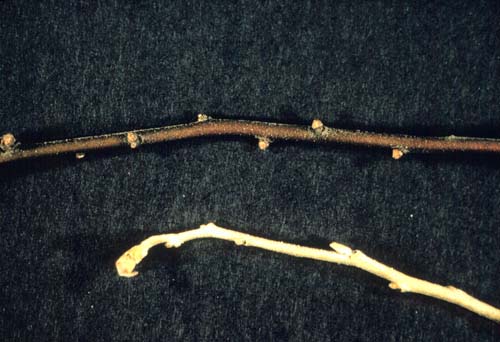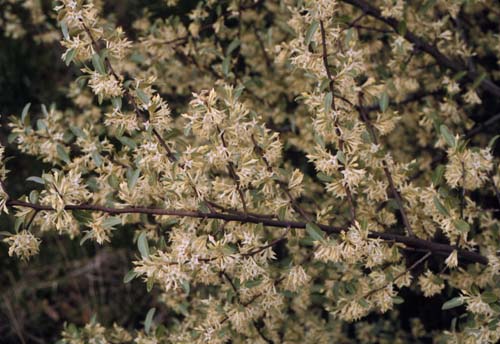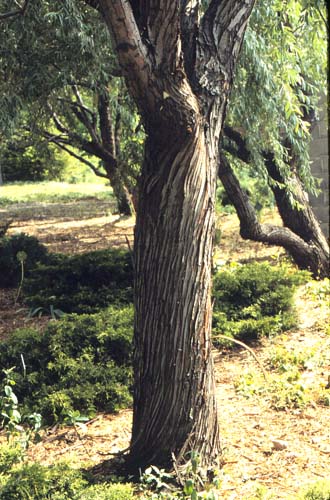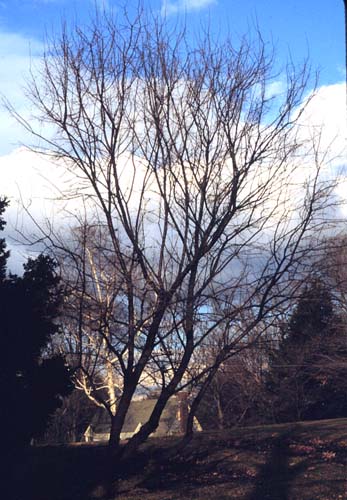Elaeagnus angustifolia
Russian Olive, Oleaster
Elaeagnaceae
ExpandHabitat
- native to southern Europe through the Himalayas
- hardy to zone 2
- Special Note: This species has demonstrated an invasive tendency in Connecticut, meaning it may escape from cultivation and naturalize in minimally managed areas. For more information, .
Habit and Form
- a deciduous large shrub or tree
- over 15' tall and widespreading
- rounded habit
- fast growth rate
- fine to medium texture
Summer Foliage
- alternate, deciduous leaves
- simple leaves
- linear to lanceolate leaf shape
- 1.5' to 3" long
- dull green to gray green leaf color
- silvery underside
- entire leaf margin
Autumn Foliage
- no fall color
Flowers
- silvery white flowers
- small, but abundant
- blooms in May
- foliage tend to cover flowers
- fragrant
Fruit
- drupe-like yellow fruit
- 0.5" long
- fruit is covered with silver scales
- matures in September
- edible
Bark
- silvery, thin stems
- thorns sometimes present
- covered in scales
- grayish-brown older bark
Culture
- easily transplanted
- salt tolerant
- very tough and adaptable
- full sun
- prune tolerant
Landscape Use
- for silvery foliage
- hedge or screen
- seacoast or highways
- for durability
Liabilities
- thorns sometimes present
- leaf spot, canker, aphids
- verticillium
ID Features
- small, sessile, solitary, conical buds
- suckers / invasive
- alternate leaf arrangement
- brown lenticels cover every part of plant
- silvery look to foliage, fruit and flowers
- yellow fruit
Propagation
- by seed
- by tissue culture
Cultivars/Varieties
The only cultivars available are selected clones with better fruiting. Among them is 'Red King', with deep red fruits.





